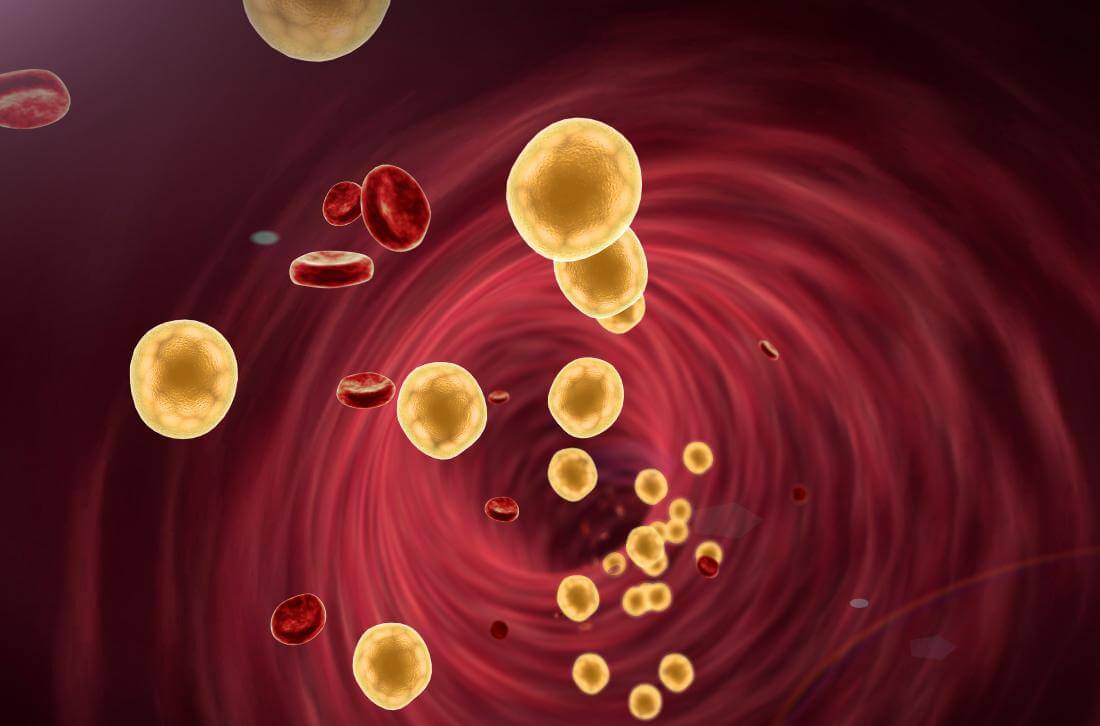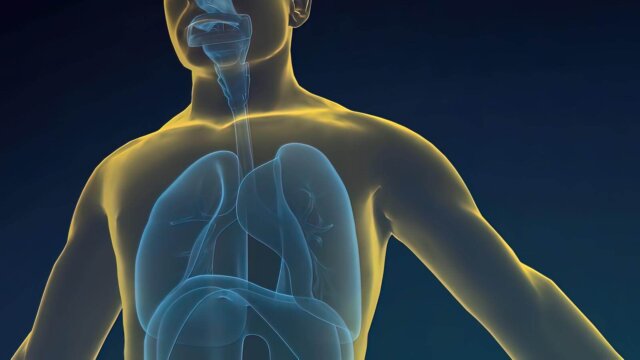FTC disclaimer: This post may contains affiliate links and we will be compensated if you click on a link and make a purchase.
Dyslipidemia is a disorder of lipoprotein metabolism, which results in an abnormal amount of lipid (cholesterol, triglycerides, and fat phospholipids) in the blood. It includes both the overproduction and deficiency of lipoprotein.
Dyslipidemia can manifest as the elevation of plasma cholesterol, triglycerides, or both.
Moreover, it can also be manifested by the elevation of “bad” low-density lipoprotein (LDL) cholesterol and the decrease of “good” high-density lipoprotein (HDL) cholesterol in the blood.
In Western societies, most dyslipidemia cases are instances of hyperlipidemia caused by an elevation of lipids in the blood.
Hyperlipidemia often results from dietary and lifestyle choices. However, the causes of dyslipidemia can be genetic or secondary.
The diagnosis of Dyslipidemia is carried out by measuring the plasma levels of total cholesterol.
Moreover, the routine measurements that can help diagnose dyslipidemia include total cholesterol, triglycerides, HDL cholesterol, and LDL cholesterol measurements.
How does Dyslipidemia occur?
Lipids are naturally occurring molecules found in the bloodstream. They are fats, waxes, and fat-soluble vitamins whose primary functions are energy storage and reinforcing cell membranes’ structure.
However, the blood needs a balanced level of lipids for healthy functioning. Dyslipidemia is an abnormal amount of lipids in the bloodstream.
Most often, an excess of lipids leads to the accumulation of cholesterol. Excessive cholesterol buildup can cause a strain the heart, which has to work harder to deliver nutrients throughout the body through the bloodstream.
Dyslipidemia can cause heart disease, unhealthy blood pressure, heart attack, or stroke.
Causes and Risk Factor of Dyslipidemia
What are the Primary and Secondary Causes of Dyslipidemia?
Primary causes of Dyslipidemia
Primary causes of dyslipidemia are single or multiple gene mutations that lead to the overproduction of triglycerides and LDL cholesterol or the underproduction or excessive clearance of HDL cholesterol.
Genetic mutations can lead people to overproduce cholesterol or to absorb it excessively.
In most adults with dyslipidemia, genetic causes play little or no role in developing the disorder. There are a select few cases that are due to genetics alone.
However, primary disorders do not cause the majority of dyslipidemia cases in adults.
Secondary causes of Dyslipidemia
Secondary causes contribute to the majority of cases in adults. Lifestyle plays a huge role in the development of the disease.
Moreover, the secondary cause of dyslipidemia in adults is a sedentary lifestyle coupled with excessive intake of saturated fat, cholesterol, and trans fats in their diet.
Other secondary causes of dyslipidemia include diabetes mellitus, hypothyroidism, overuse of alcohol, and chronic kidney disease.
Some people develop it as a result of poorly managed diabetes. Diabetes is a very significant secondary cause of high cholesterol and triglyceride levels.
Additionally, Diabetics tend to have a more sedentary lifestyle and have more body fat than the average population. This puts them at a greater risk. Female diabetics are affected to a greater extent than males.
Familial Medical History’s Effects on Dyslipidemia
Your family genes play a large role in many medical factors in your life, so knowing about your familial medical history with dyslipidemia is important for diagnosing and treating the issue.
High blood cholesterol is a serious issue if untreated. Asking family members about their medical history with dyslipidemia makes a huge difference.
Obesity in family
One of the leading causes of high blood cholesterol and dyslipidemia, obesity is a serious issue in recent decades, as per research study.
However, many families have genetic backgrounds of carrying extra weight. A lot of heavier families have also pinpointed similar medical issues.
It might seem intrusive to ask about this with family members, but it beats walking into the doctor’s office completely oblivious.
Alcohol abuse in the family
Painful as it is to confront alcohol abuse in family history, it is important to keep this in perspective when considering how much it affects dyslipidemia.
Ask your family members if alcoholism has ever presented a problem.
Inactivity or lack of exercise in family history
An individual raised in a family whose members were inactive from a physical standpoint might find themselves at risk for high blood cholesterol.
Exercise is a great means of battling this health condition, and equally, not moving around promotes higher blood cholesterol and further the development of dyslipidemia.
Genetic disorders passed from family members.
Genetic disorders are often passed down from generation to generation. Many research has indicated that several types of disorders are inherited from parents linked to the health problem.
It is important not to get discouraged with high blood cholesterol and the effects brought on by dyslipidemia.
Keep active, eat healthier and ask family members about the health condition to lead a happier life.
Age and Gender Contribute to the development of Dyslipidemia.
Associations between age and dyslipidemia
Age tends to affect cholesterol levels because as people age, they are less capable of metabolizing the cholesterol.
This happens for many reasons. One of the most common is the fact that people lead more sedentary lives as they grow older.
Besides, metabolism slows, and the body needs less cholesterol. If a person does not reduce his or her cholesterol intake once this slowdown happens, the unused cholesterol accumulates in the body, coating arteries and increasing the risk of disease.
Cholesterol levels tend to rise after age 20 in both men and women due to processed foods.
Gender differences and dyslipidemia
In men, cholesterol levels rise from age 20 to approximately age 50. Then, they typically level off.
Because of this statistic, men are more likely to have heart attacks at a younger age because they have more cholesterol accumulated at a younger age than women.
Women, on the other hand, often have much lower cholesterol levels in early middle age. However, levels tend to rise after menopause. After this rise, women, and men have similar cholesterol levels.
Although people cannot control age and gender differences in cholesterol levels, there are many things they can do to combat these effects.
Eating a healthier diet can help lower cholesterol levels; such diets include ample fiber, “good” HDL cholesterol, and less “bad” LDL cholesterol.
Fiber tends to absorb cholesterol and helps to prevent unnecessary accumulation.
Besides, exercise improves cardiovascular health and helps increase circulation, which discourages excess cholesterol from accumulating in one place.
Sedentary Lifestyle Could Cause Dyslipidemia
There are many different reasons for high blood cholesterol, such as genetics, thyroid disease, and a high alcohol intake; one large reason is living a sedentary lifestyle.
The research report has shown that a sedentary lifestyle is one of the common factors in the rise of dyslipidemia.
Changing your life
You may feel that you do not have the time or energy for regular exercise, but without proper exercise and the right diet, your dyslipidemia chances increase drastically.
Living a more active lifestyle helps the blood flow through your blood vessels much easier and helps your body get rid of bad cholesterol more easily.
By spending a few hours every week doing cardiovascular and strength-training exercises, you can better your chances of living longer.
Making your lifestyle more active starts with exercise, but it also encompasses a variety of different factors.
This includes your diet and what foods you put into your body. Eat a well-balanced and nutritious diet, and you begin to have the energy to live more actively.
As excess lipids in the bloodstream are the definition of dyslipidemia, having a lifestyle that reduces those lipids is key to preventing this dangerous blood disorder.
Unhealthy Eating and Obesity contribute to Dyslipidemia.
Understanding the relationship between diet, obesity, and dyslipidemia:
Diet
Since the material that enters the bloodstream comes from consuming food, eating unhealthy foods rich in cholesterol, fats and oils can directly contribute to health conditions, including dyslipidemia.
To keep blood cholesterol at a healthy, sustainable level, it is important to maintain a balanced diet.
Healthy eating includes high fiber and vitamins, such as broccoli, beans, peas, bananas, apples, and whole grains.
Obesity
According to a research paper, Obesity and dyslipidemia often go hand-in-hand and influence metabolic and cardiovascular risk factors.
When the body has an excess of fat, it stores some of it in fatty deposits, while other fat compounds end up in the bloodstream as cholesterol.
This can clog arteries and lead to several health problems jeopardizing vitality and quality of life.
The best methods for reducing obesity and avoiding dyslipidemia are an active lifestyle involving regular exercise (four to six times per week), frequent walking, and adequate hydration.
Dyslipidemia is a condition that can lead to many other undesirable complications. With a foundation of dietary and exercise knowledge and a little discipline, individuals can reduce their risk and live a healthy, vibrant life.
Smoking and Alcohol Cause Dyslipidemia
Smoking cigarettes and drinking alcohol can adversely affect your blood cholesterol and lead to Dyslipidemia, as per multiple research.
The impact of smoking on dyslipidemia
Smoking affects cholesterol in several negative ways. It lowers the high-density lipoprotein, HDL, or good cholesterol, and is associated with higher triglycerides and low-density lipoprotein, LDL, or bad cholesterol.
The belief is that it turns the LDL into a type that stimulates the buildup of deposits inside the coronary arteries’ walls.
Additionally, smoking increases the risk of coronary heart disease in healthy people and raises that risk substantially in those with risk factors.
Alcohol and dyslipidemia
Limiting alcohol consumption to one or two drinks per day is considered safe.
Some studies suggest that moderate drinking is linked to higher HDL levels, but this is not sufficiently relevant to encourage drinking.
The negative aspects of consuming alcohol, such as alcoholism, stroke, and high blood pressure, offset the potential benefits.
Additionally, consuming large amounts of alcohol can increase the level of triglycerides in the bloodstream.
The American Heart Association cautions individuals against increasing their alcohol consumption or start drinking if they are nondrinkers.
Dyslipidemia, or high blood cholesterol, occurs when there is an unsafe level of bad cholesterol or triglycerides in the bloodstream.
Although cholesterol is needed for your body’s proper functioning, too much of it can clog arteries and increase the risk for serious health complications.
Smoking cigarettes and drinking alcohol can cause high blood cholesterol, so it is best to avoid doing these things.
Why Does Diabetes Cause Dyslipidemia?
Dyslipidemia, or high blood cholesterol, is often found in patients with diabetes. Research has shown that diabetes is an independent risk factor for Dyslipidemia.
This is because cardiovascular diseases are more common in those with diabetes (type 1 or type 2). While the connection between the two conditions is not fully understood, some things are known.
Diabetic dyslipidemia
Those who have diabetes frequently have low high-density lipoprotein (HDL or the so-called good cholesterol) and high low-density lipoprotein (LDL or the so-called bad cholesterol).
This is the case more often in those who have type 2 diabetes than those who have type 1 diabetes. This condition is called diabetic dyslipidemia.
Diabetic dyslipidemia can sometimes lead to heart disease. People with diabetes are two to four times more likely to die from heart disease than non-diabetics.
Causes of dyslipidemia in diabetics
People with diabetes suffer from defects in insulin action or a lack of insulin, resulting in hyperglycemia. Hyperglycemia can bring about changes in plasma lipoproteins in diabetics.
In those with type 1 diabetes, reduced HDL and increased LDL can occur because of the lack of insulin and hyperglycemia.
When this is the cause, the condition is often alleviated once the patient receives insulin therapy. The cause and solution are not so clear with type 2 diabetes.
Because dyslipidemia is found even more commonly in those with type 2 diabetes, it is thought that the obesity that causes insulin-resistance may itself bring out the abnormalities in HDL and LDL levels even apart from hyperglycemia.
Diet and exercise can alleviate or mitigate the condition, but insulin alone does not solve type 2 diabetics.
There is a clear corollary between diabetes and dyslipidemia, though its cause seems slightly different in type 1 diabetes instead of type 2 diabetes.
It is possible to do some things to treat or at least mitigate dyslipidemia in diabetics.
Symptoms of Dyslipidemia
Although dyslipidemia usually doesn’t cause symptoms, it can lead to symptomatic vascular disease, including coronary artery disease (CAD) and peripheral arterial disease.
Those with a high concentration of LDL in their blood can experience symptoms such as eyelid xanthelasma (flat yellow or white growths on the upper eyelid) and corneal arcus (an abnormal white or gray opaque ring around the iris – the colored part of your eye).
Severe elevations of triglycerides can lead to the formation of eruptive xanthomas (yellow, soft, and slightly raised bumps) over the hands, knees, back, elbows, etc.
Dyslipidemia is linked to many diseases like heart disorders, high blood pressure, and diabetes.
The latest research shows that dyslipidemia is also linked to erectile dysfunction. According to research, 20% of men who have erectile dysfunction have dyslipidemia.
Treatment of Dyslipidemia
Dyslipidemia describes an abnormal level of fat or cholesterol in the blood. This condition includes both extraordinarily high or low levels.
Fat or cholesterol, also known as lipids, usually manifest in excess through unhealthy diet and lifestyle choices.
Additionally, prolonged elevation of insulin in the body, which often happens to diabetics, can also cause dyslipidemia.
Doctors use various treatment methods that involve detecting the underlying cause.
Treatment may include modified diets, exercise, and prescription drug therapy to help patients bring their cholesterol back to more normal levels.
With the right diagnosis and proper treatment, dyslipidemia does not have to impact your life.
Treatment of dyslipidemia is advised to all patients who have cardiovascular disease and for some without.
Moreover, the treatment of dyslipidemia primarily focuses on reducing high levels of LDL cholesterol.
Further, it focuses on treating high triglycerides, low levels of HDL cholesterol, and metabolic syndrome.
High-risk patients with dyslipidemia must start medication immediately and make lifestyle changes.
Smokers with CAD can lower the risk of mortality by 36% if they quit smoking.
Moderate-risk and low-risk patients must make lifestyle modifications as the first intervention.
Important lifestyle modifications include
- Exercising moderately for at least thirty minutes a day
- Reducing simple sugars, refined carbohydrates, saturated fats, and trans fats in the diet.
Additionally, increasing the intake of fruits, vegetables (all types), whole grains, and the proportion of mono and poly-unsaturated fats.
Outlook
An elevated blood lipid level is normally due to a high-fat diet, a sedentary lifestyle, genetics, untreated diabetes, or a combination of these issues.
A simple cholesterol-screening test can identify the presence of elevated lipids. Hyperlipidemia can create serious health risks.
The chance of developing coronary heart disease is much greater in those with elevated cholesterol levels.
Hypolipidemia is normally caused by genetics or a serious medical condition, such as stomach cancer. Both conditions require treatment.
Changes in lifestyle and diet can decrease the risk of developing high cholesterol. Regular cardiovascular exercises and the consumption of healthy mono- and polyunsaturated fats can lower cholesterol levels and maintain already healthy levels.
Regular medical screenings and smoking cessation are also linked to a decreased risk of developing heart disease.








